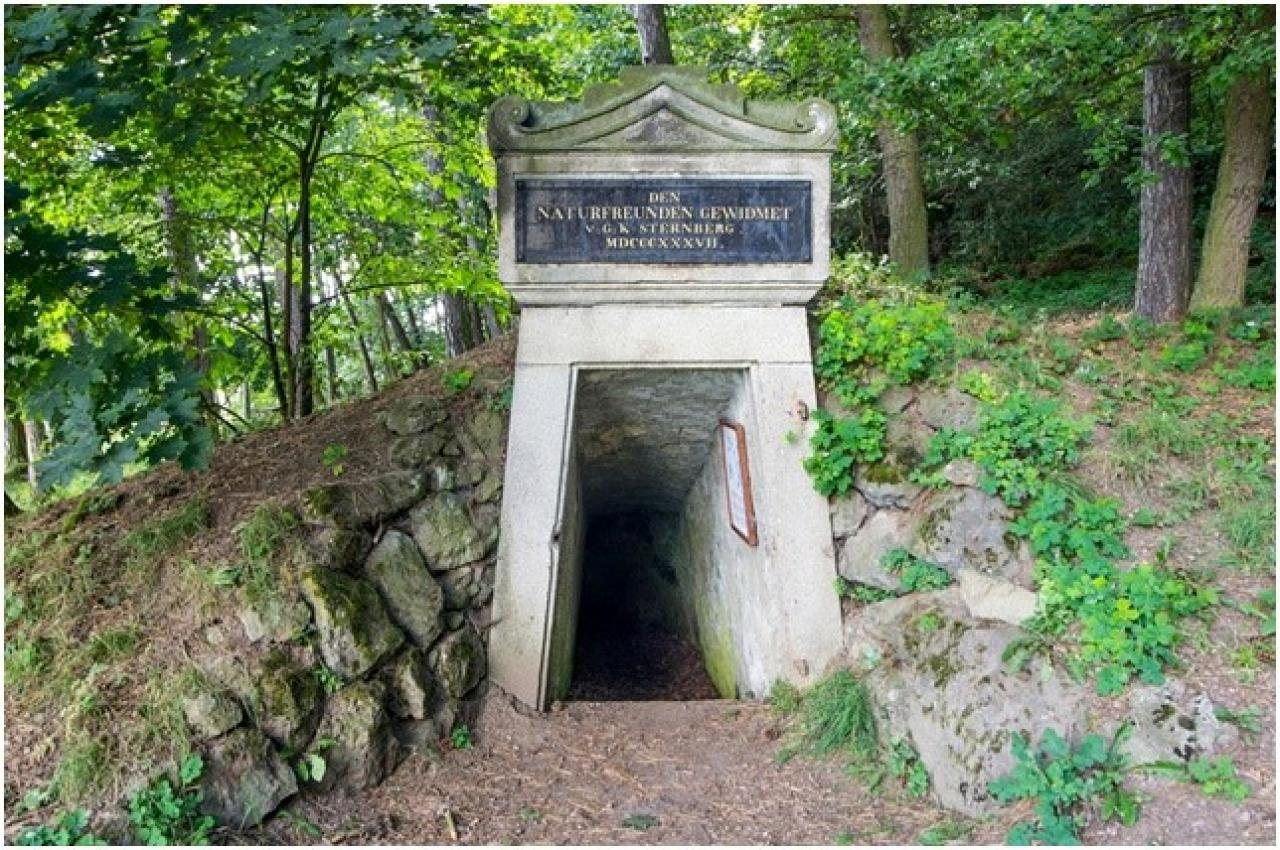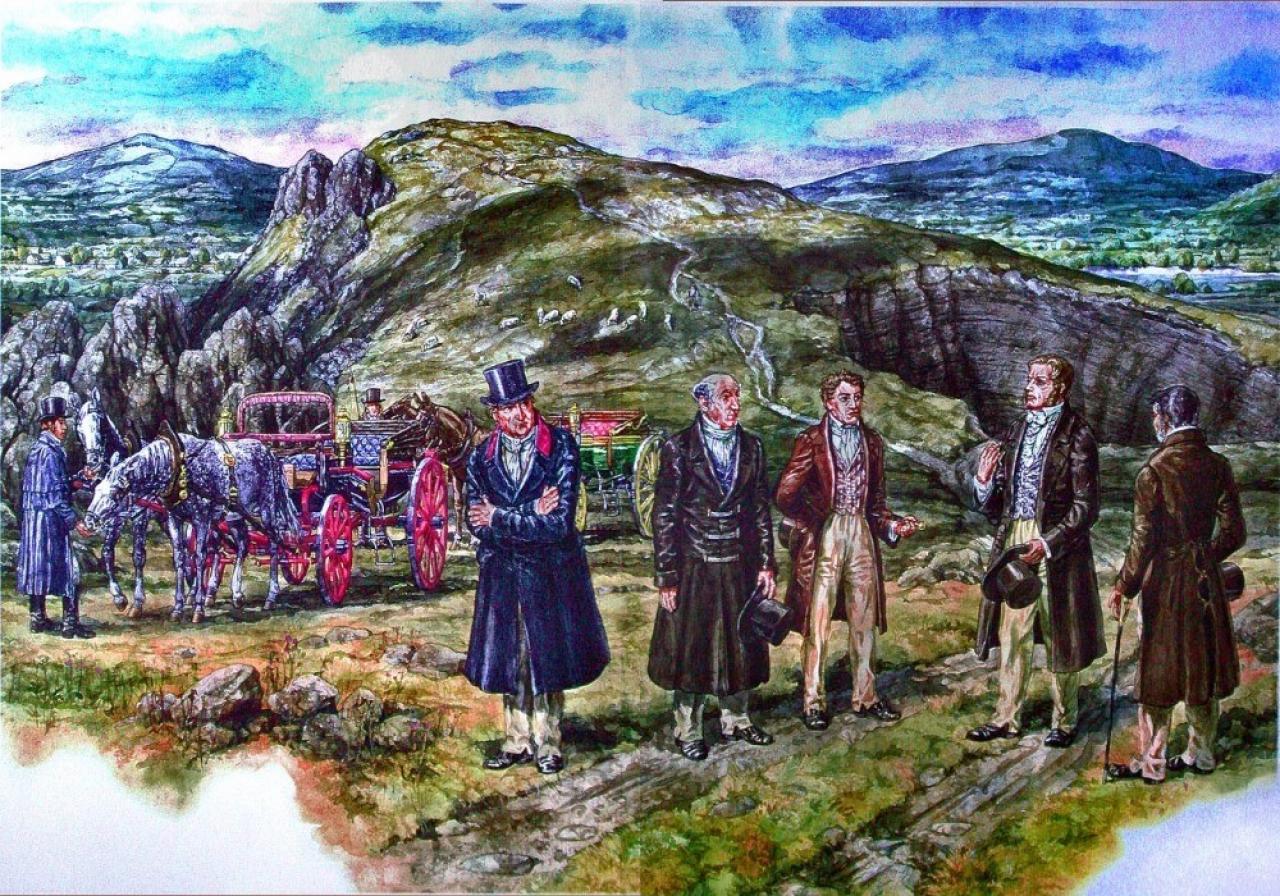Komorní hůrka near Cheb
Dating: 1822
Annotation:
In the early 19th century the Tertiary volcano was the focus of a scientific dispute concerning the origin of basalt. Count Kaspar von Sternberg, founder of the Patriotic Museum, had an experimental gallery bored here at the instigation of the poet and naturalist J. W. Von Goethe in 1834–1837. It confirmed what was known as the Plutonist theory, which claimed that the hill was of volcanic origin.
Description:
Komorní hůrka had been explored by Ignaz von Born, founder of the Learned Society. His report of 1773 describes it as an extinct volcano and states: “An enclosed subterranean fire… broke through the slate and therefore, given the large quantity of volcanic slag, cannot be considered (as some researchers believe) to have been a random underground fire.” Here, von Born is up against the fact that many researchers supported the so-called Neptunism theory, which held that the sedimentary origin of rocks and the slag-like structure of the igneous rocks were the consequence of burning coal, which did actually often happen in this area. The main proponent of Neptunism was Abraham Gottlob Werner, a professor at the Freiber Mining Academy. Future surveys proved that von Born was right. However, before the Plutonist school of thought won the day, Komorní hůrka became the site of many learned debates. Johann Wolfgang von Goethe (1749–1832) was constantly interested in the ambiguous origin of Komorní hůrka. In many discussions with Kaspar von Sternberg he concluded that the problem could definitively be resolved by boring a gallery, which, incidentally, was what von Born had proposed. The question remained unanswered, and von Goethe reluctantly acceded to the unequivocal claims that the hill was the result of volcanic activity.
The incoming lava channel was finally discovered by an experimental gallery excavated at Kaspar von Sternberg’s expense in 1834–1837. The gallery was the first scientific experiment of its kind in the world – it was motivated purely by scientific rather than economic considerations. As regards the dispute between the Neptunists and the Plutonists, however, this was merely a symbolic act, as Werner had been dead for 20 years by then and the new concept of geology was already generally accepted.
The entrance to the gallery, which has now been reopened thanks to the work of the Institute of Geophysics of the Czech Academy of Sciences, is marked with the inscription “devoted to the friends of nature by Kaspar von Sternberg”. To commemorate Goethe’s death in 1932 a relief of Goethe was carved directly into the rock with a dedication to the great “explorer of Komorní hůrka”. The relief is by Johann A. Mayerl, who also created the iconic statue of little František in Františkovy Lázně, amongst other works.
Connected places:
Kaspar Sternberg
Bořeň
Joseph Sebastian GrünerKašpar Šternberk; Železná hůrka
Keywords: history of natural sciences; geology; neptunism; plutonism; Goethe in Bohemia; volcanic origin;
References:
Fejfar, O. Lázeňský host, geolog a výletník: Přírodovědná zkoumání Johanna W. Goetha během jeho pobytů v Čechách. Živa 6, 2011, s. 89–91.
Matoušek, O. Dějiny československé geologie. Mladá generace československých přírodovědců a zeměpisců. Praha 1935.
Urzidil, J. Goethe v Čechách. Příbram 2009, s. 398–403.
Author's initials: MZ
Photos:

(Author: )

On 30th July 1822 an eminent band of scholars climbed up Komorní hůrka: Count Kaspar von Sternberg, the Swedish naturalist Jacob Berzelius, the natural sciences professor Jan Křtitel Pohl and von Goethe with his companion – the Cheb councillor Grüner. (Author: P. Major, 2008, illustrative painting based on a design by Prof. O. Fejfar)


